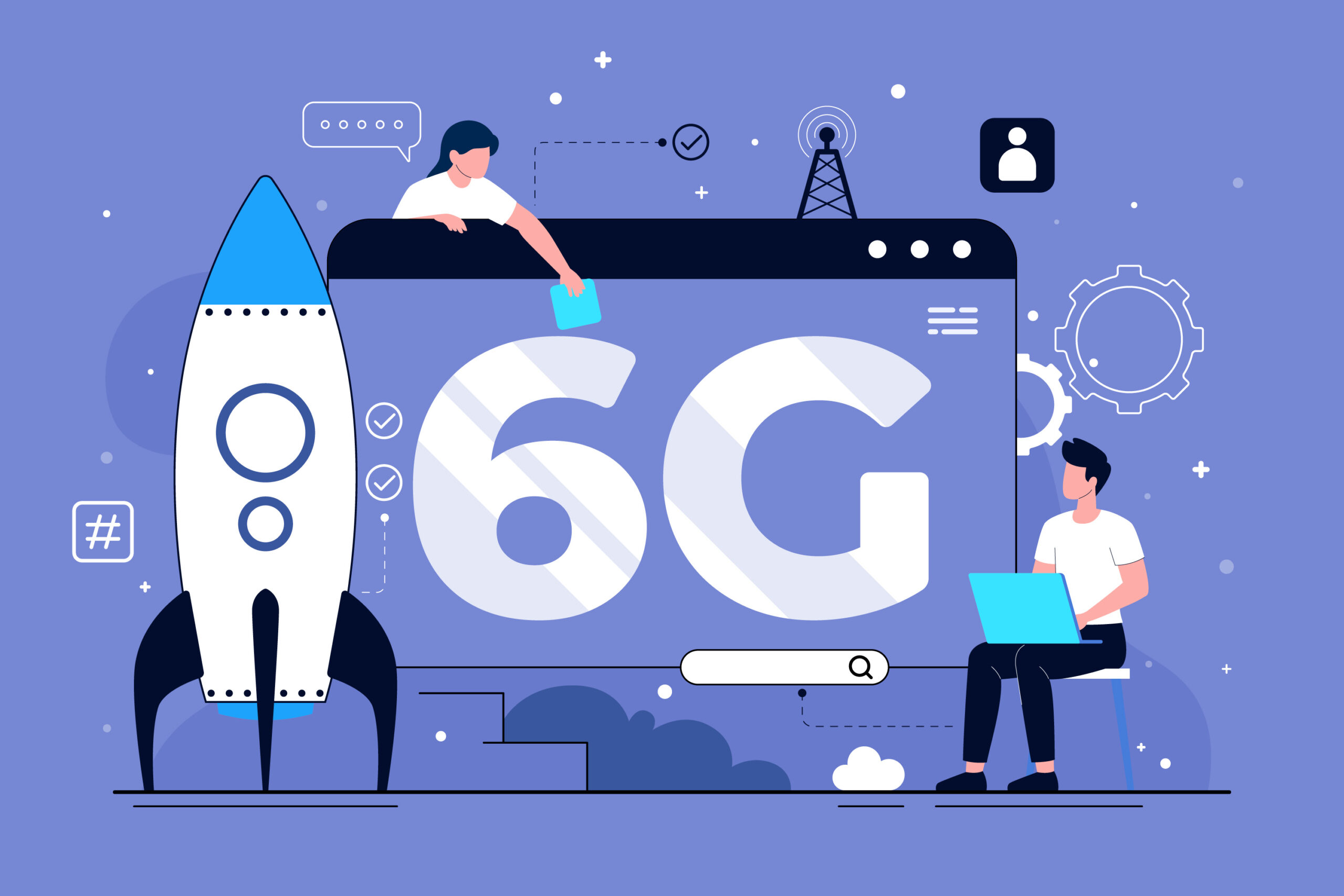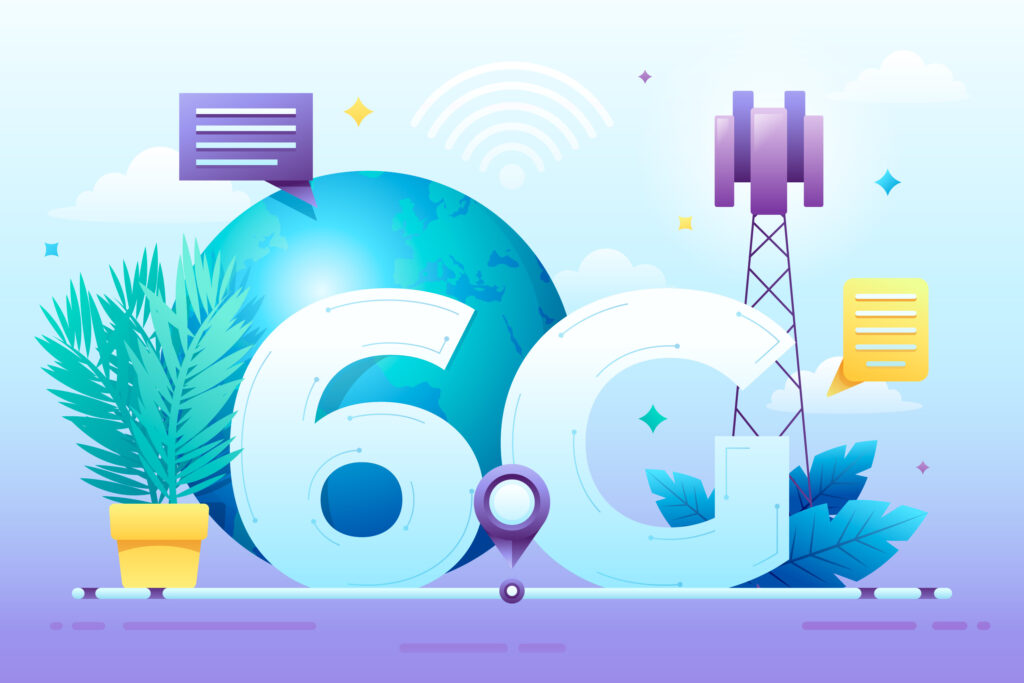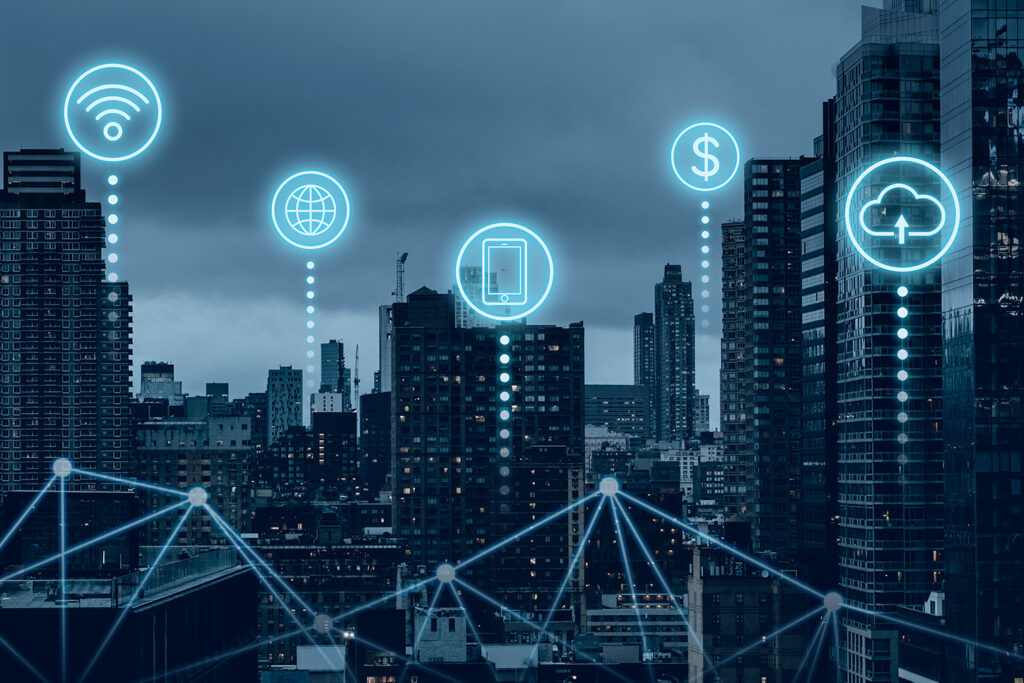6G is the name for the sixth generation of cellular networks, which will deliver truly omnipresent wireless intelligence. Expected to become available early in the 2030s, the 6G research journey is already well underway.

How will 6G be different from 5G?
6G will build on the achievements of 5G, but also go beyond them in terms of speed, capacity, latency, reliability, coverage, energy efficiency and security. 6G will also support applications beyond current mobile use scenarios, such as ubiquitous instant communications, pervasive intelligence and the Internet of Things (IoT).
Some of the technologies that might be included in 6G are:
- Terahertz and millimeter wave frequencies: These are extremely high-frequency radio waves that can enable ultra-fast data transmission and sensing, but also pose challenges in terms of propagation, interference and power consumption.
- Vortex millimeter waves: These are a form of millimeter waves with rapidly changing spins, which can increase the data capacity and resilience of wireless links. Chinese researchers claim to have achieved a record data streaming speed of 1 terabyte per second using this technology.
- Artificial intelligence (AI): AI will play a key role in 6G networks, enabling intelligent network management, resource allocation, security, optimization and personalization. AI will also enable new applications and services that leverage massive data and computing resources.
- Mobile edge computing: This is the concept of bringing computing and storage resources closer to the users and devices at the edge of the network, reducing latency and bandwidth consumption. Mobile edge computing will enable new applications such as augmented reality, virtual reality, cloud gaming and smart cities.
- Blockchain: This is a distributed ledger technology that enables secure and transparent transactions and data sharing among multiple parties without intermediaries. Blockchain can enhance the trustworthiness, privacy and scalability of 6G networks and applications.

When will 6G come out?
It’s been typical for a new mobile network standard to take the spotlight every decade or so. That means 6G networks might roll out sometime around 2030 (or even a bit earlier in Asia and other areas that were first to introduce 5G), or at least that’s when most telecom companies will be running trials and when we’ll see phone manufacturers tease 6G-capable phones.
However, it’s common for work to start as long as a decade prior to any real implementation of a new network technology, which might be why you’ll start hearing about 6G before you even have your hands on a 5G phone! Progress won’t start and finish overnight, though. There are frequency bands to debate over, spectrum licenses to purchase, physical towers to build and coordinate, and rules to deal with.
Several companies (Airtel, Anritsu, Apple, Ericsson, Fly, Huawei, Jio, Keysight, LG, Nokia, NTT Docomo, Samsung, Vi, Xiaomi), research institutes (Technology Innovation Institute, the Interuniversity Microelectronics Centre) and countries (United States, countries in the European Union, Russia, China, India, Japan, South Korea, Singapore and United Arab Emirates) have shown interest in 6G networks.
In October 2020, the Alliance for Telecommunications Industry Solutions (ATIS) launched a “Next G Alliance”, an alliance consisting of AT&T, Ericsson, Telus, Verizon, T-Mobile, Microsoft, Samsung, and others that “will advance North American mobile technology leadership in 6G and beyond over the next decade.”
In January 2022, Purple Mountain Laboratories of China claimed that its research team had achieved a world record of 206.25 gigabits per second (Gbit/s) data rate for the first time in a lab environment within the terahertz frequency band which is supposed to be the base of 6G cellular technology

Do we really need 6G?
Some might wonder if we really need 6G when 5G networks are still being deployed around the world and many areas of the globe still using 4G and even 3G networks. However, technology always pushes forward and standards take a long time to mature, so we’ve always been on a path to a 6G world.
6G will not only offer faster and better wireless connectivity, but also enable new possibilities for human-machine interaction, social and economic development, and environmental sustainability. 6G will also address some of the limitations and challenges of 5G, such as spectrum scarcity, energy consumption, security threats, and interoperability issues. Ultimately, whether it’s with 6G, 7G, or another “G”, we’ll have such incredibly fast speeds that no progress bars or wait times will be required for any normal amount of data, at least at today’s standards. Everything will just be available… instantly, and we won’t need to keep making new terms to describe it.
Share to your social below!

Hello mates, how is everything, and what you wish for to say concerning this article, in my view its in fact awesome in support of me.
My web page … vpn special coupon code 2024
These are in fact impressive ideas in concerning blogging.
You have touched some pleasant points here. Any way keep up wrinting.
Look into my blog post vpn coupon 2024
I don’t know if it’s just me or if everybody else experiencing issues with your site.
It appears like some of the written text within your posts are running
off the screen. Can somebody else please provide feedback and let me know if this is happening facebook vs eharmony to find love online
them too? This could be a issue with my browser because I’ve had this happen previously.
Cheers
I seriously love your blog.. Excellent colors & theme.
Did you create this amazing site yourself? Please reply back as I’m planning to create my own site and would love to know where
you got this from or exactly what the theme
is named. Appreciate it!
Here is my webpage: eharmony special coupon code
It’s hard to come by experienced people on this topic,
however, you seem like you know what you’re talking about!
Thanks
Also visit my web page – nordvpn special coupon code
Rattling good information can be found on site.Expand blog